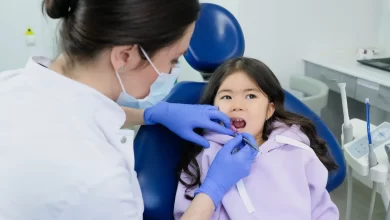Telemedicine & Your Family: Can It Replace Doctor Visits?

Contents
If you’ve ever been diagnosed through a video call by your doctor, then you’ve experienced the benefits of telemedicine first hand.
Originally developed by healthcare professionals to reach patients in rural areas, it’s now a revolutionary system to quickly and easily receive medical attention. From complex online platforms to downloadable mobile apps, telemedicine could forever change the way people – especially your family – receive healthcare treatment.
But could this system effectively replace real visits to your doctor? Why or why not?
What Is Telemedicine?
The concept began as early as 1925, when Dr. Hugo Gernsback thought about applying technology to examine a patient who was far away.
He envisioned a device that would use radio communication – along with an odd contraption he called a “teledactyl” – to provide diagnoses. The concept was published on the cover of Science and Invention, and is believed to be the first prediction of telemedicine’s popularity today.
These days, the scope of telemedicine can cover almost anything that deals with healthcare assistance.
From something as simple as using a mobile app to check your glucose levels and automatically sending them to your doctor, to more complex situations such as a patient receiving teleradiology in order to get the right treatment plan from a radiologist who’s miles away.
Pros and Cons of Telemedicine
It’s just about impossible to imagine healthcare the way we know today without including telemedicine in the picture. It’s not just patients who reap the obvious advantages of this method, but also medical professionals like nurses, physicians, case managers, as well as locum tenens workers.
In a 2015 statistic, 86 percent of doctors agreed that mobile apps will be vital to them in managing patient conditions over the next five years. Meanwhile, one in five patients are comfortable with using technology to help them with their medical conditions.
Imagine a future when, during an emergency in the middle of the night, you can simply do a video call to your family doctor. No need to rush to your car, maneuver through traffic, or leave behind your kids. That means you can save more time – and perhaps your loved one, too – with a simple click or tap on a gadget.
Thanks to advances in technology, now anyone with an Internet connection can reach a physician in seconds – without getting an appointment or having to wait in line. Another benefit for users is the ease of getting a second opinion.
In fact, more and more doctors find that diagnosing patients through a webcam gets them more appointments, while saving their patient’s time. Should there be unforeseen circumstances (like snow storms), physicians don’t need to cancel prior arrangements and could spend several minutes with each client.
However, telemedicine is not without its share of disadvantages.
Just because a doctor’s diagnosis is only seconds away doesn’t mean it’s necessary for everyone or that it will suddenly replace real visits to a clinic.
According to Dr. Aditi Joshi, a physician at Doctor on Demand, telemedicine is more of a convenience than a requirement. When people are in pain or are not feeling well, waiting for hours at the ER or a clinic seems impractical. Here’s where remote healthcare practitioners come in.
Psychiatrist Dr. Stuart Gitlow on the other hand, warns that some physicians may start becoming lazy and simply use technology in lieu of physical diagnoses. Although video chatting with your doctor is some cases is needed – like when you’re away on Holiday and you suddenly feel ill – nothing beats actual visits to his clinic.
In this light, telemedicine should be used in conjunction with traditional practices to boost the patient’s healthcare experience.
Dr. Samir Qamar, MedLion CEO, acknowledges the lack of physical examination in telemedicine. If doctors can’t be with you in person, how are they to tell what’s really wrong with you? But as technology develops and new devices are invented, telemedicine in the future may involve more than mere consultations.
Are There Enough Doctors For My Family?
As the costs and demands for healthcare continue to rise, so is the need for qualified healthcare providers who are also adept at telemedicine practices. With 44 percent of physicians planning to cut back on services and hours as of 2015, the question becomes: do we have enough people to take care of this generation?
Telemedicine seems to be the answer.
Doctors who want to have more work-life balance can use online platforms to continue their practice and even serve rural areas – all without leaving their current location. Hospitals employing expensive workers on the other hand, could cut back on expenses and still remain in coordination with medical experts anywhere in the country.
You and your family may now have access to doctors via webcams, but it doesn’t mean you don’t need real examinations and consultations anymore. It’s a great alternative though, particularly if you can’t leave the house. But nothing beats visiting your physician.
Still, it’s also not a bad idea to embrace changes in the healthcare industry.
Like vitamins should NOT replace healthy eating, telemedicine – at least for the time being – is NO replacement for real doctor visits.






